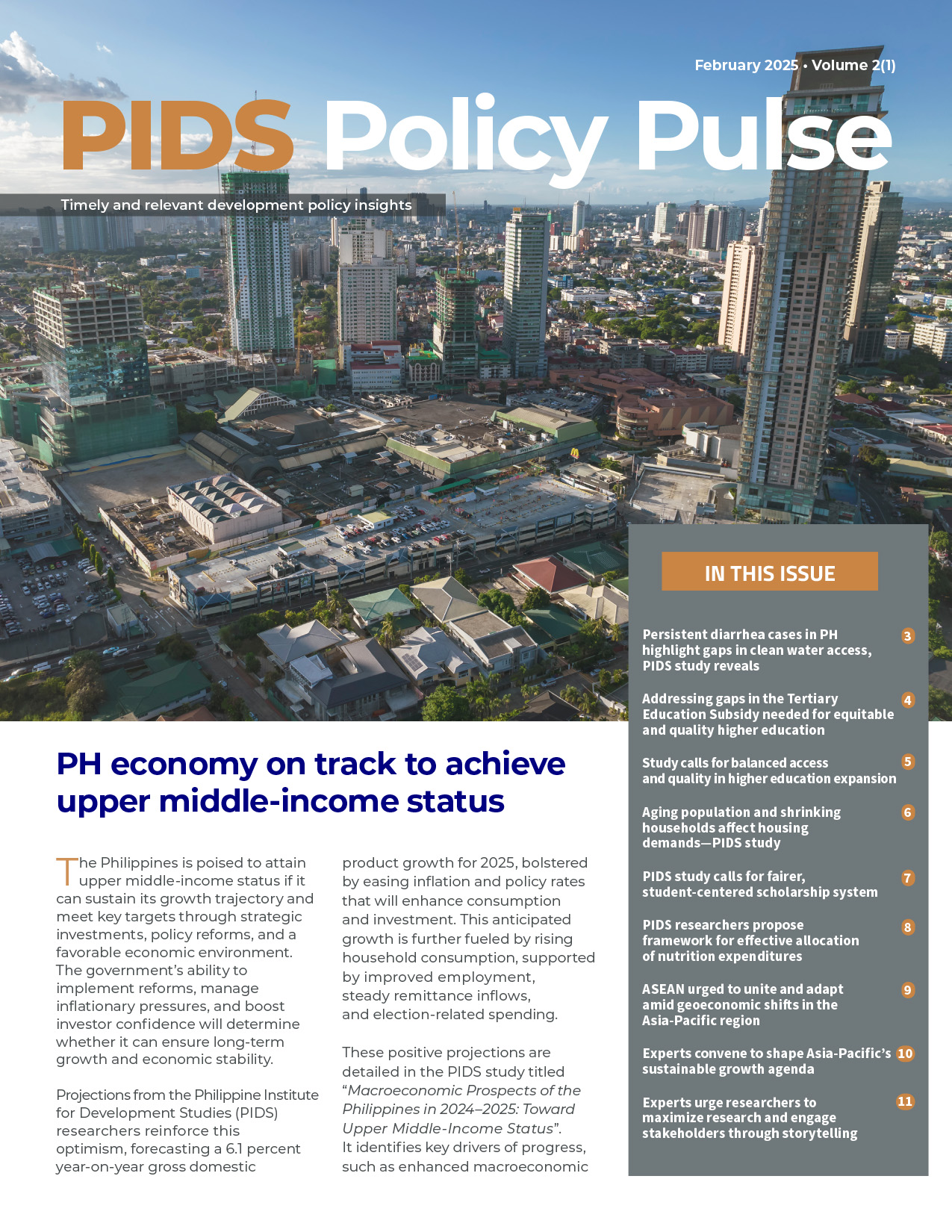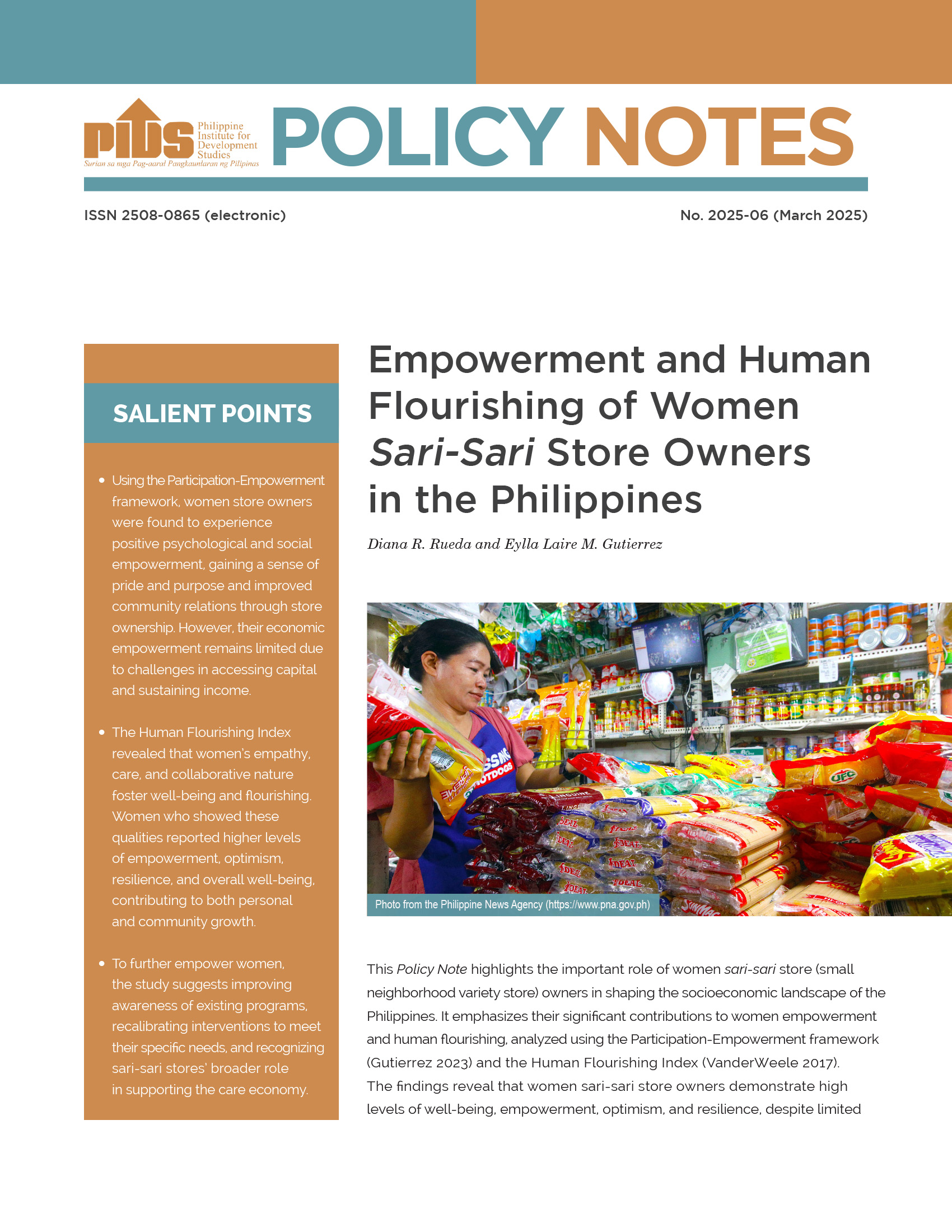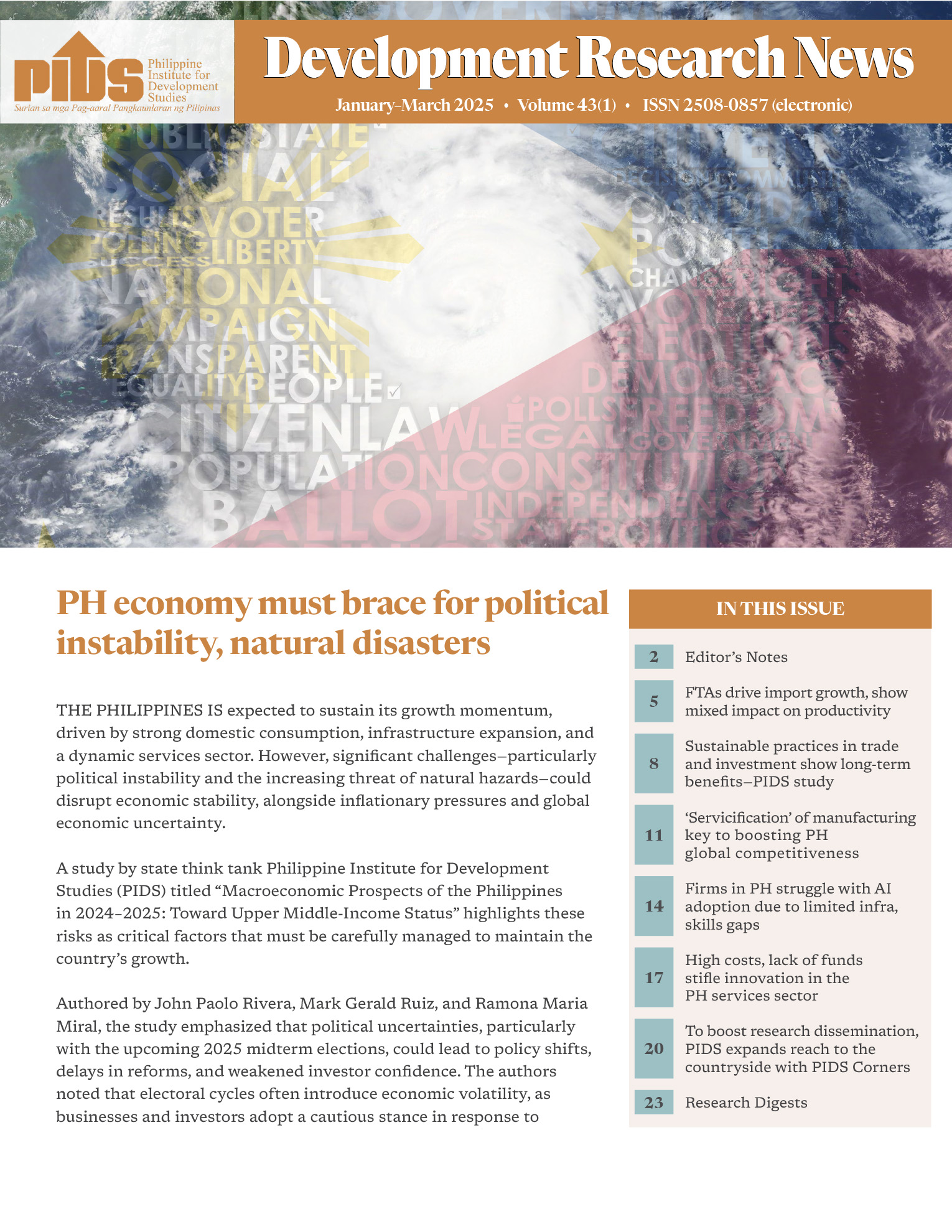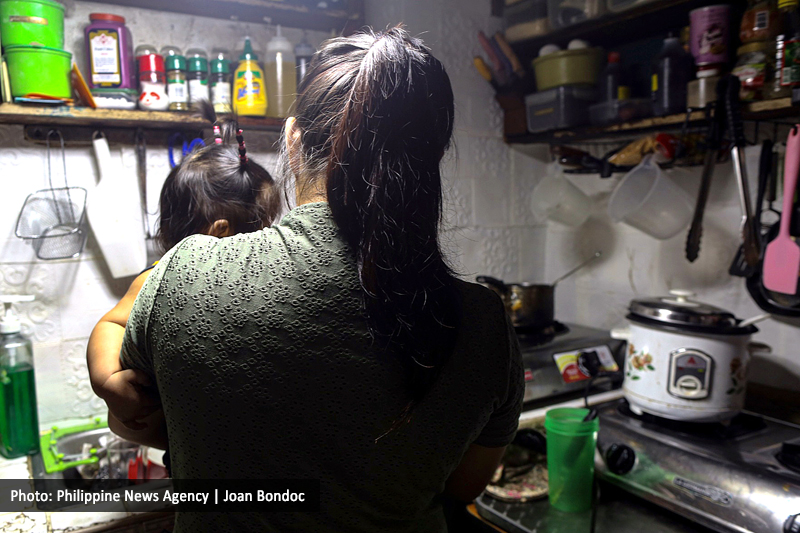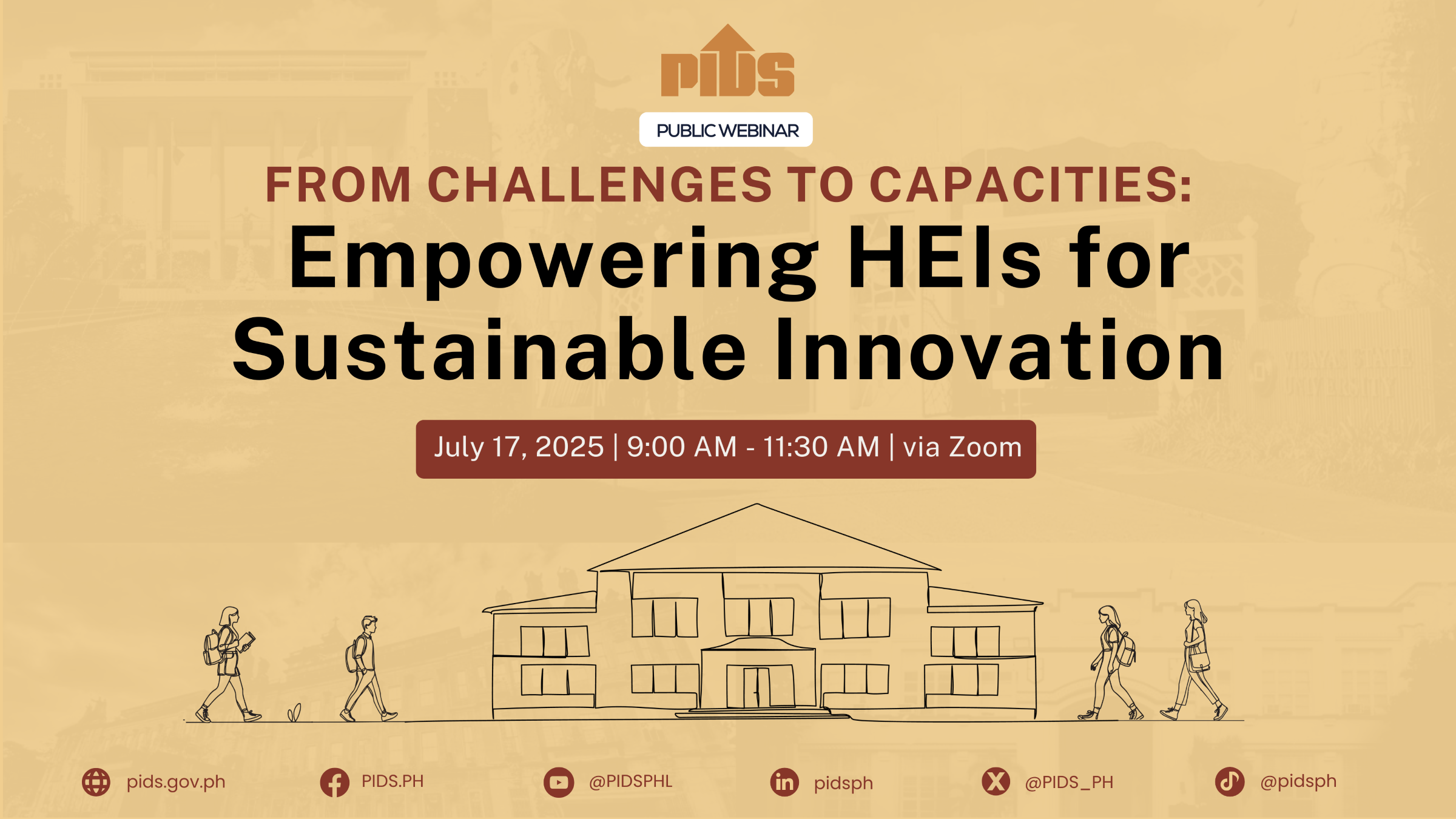With the maturity of the IT-BPM sector, the manufacturing sector now emerges as the next in line. With its inspiring growth performance, the country is currently witnessing an exciting phase in a sector that is seen to be more inclusive than others.
“The manufacturing sector is performing very well. Increases in the purchases of capital and durable goods contributed to the increase and further indicates that there is business and consumer confidence in the domestic economy,” said Socioeconomic Planning Secretary Ernesto M. Pernia.
Ernesto M. Pernia
The manufacturing value added contribution has been quite steady since the 1990s. From an average share of 24.3 percent from 1991 to 2000, the sector’s average value added share from 2001 to 2010 slightly decreased to 23.7 percent. From 2011 to 2014, the average manufacturing value added contribution further decreased to 23 percent. This decline is also shared by the overall industry sector, given that the manufacturing sector accounts for almost 70 percent of the entire industrial sector’s gross value added. In 2016, the contribution of the manufacturing sector to the economy hit 22.8 percent
Manufacturing output posted double-digit growth in both December, 2016 and full-year 2016 due to increase in production of petroleum products, food manufactures, and transport equipment, according to the National Economic and Development Authority (NEDA).
The Philippine Statistics Authority reported that full-year volume of production index for manufacturing grew 14.4 percent for year 2016 from 2.5 percent growth recorded in 2015.
The Board of Investments also reported that investments in the manufacturing sector increased almost three-fold or by 256 percent to R96 billion in 2017 from only R27 billion in 2015. The figure is also 95 percent higher than the R49.259 billion reported in 2016.
The manufacturing sector is the third top performing sector for the year led by new power and energy projects, infrastructure, real estate, transportation, and logistics.
DTI Undersecretary Ceferino S. Rodolfo, who is also BOI managing head, said that as the GDP grows, this would attract more local and foreign investors in the manufacturing sector because of the strong growth in domestic consumption and those infrastructure and construction projects both in the public and private sector. GDP growth in the Philippines is seen to stay within the 6.7 percent level for 2017-2018.
“The increase in infrastructure projects this year supports the BOI’s push for the growth in economic activities outside Metro Manila and the ‘Build, Build, Build’ or the massive infrastructure program of the administration,” Rodolfo said.
A study by think tank Philippine Institute for Development Studies attributed the growth in the manufacturing sector to the aggressive industrial policies of the government.
To revive the manufacturing sector, the Department of Trade and Industry launched the Industry Roadmaps Initiatives in 2012. It reconvened the Industry Development Council in 2014 . More than 30 sectoral roadmaps had been completed and more industries are expected to participate in the studies.
Together with that, the DTI also launched the Manufacturing Resurgence Program, which aims to restore and revitalize the manufacturing sector.
Under the Manufacturing Resurgence Program of the DTI, the target is to increase the sector’s contribution to 30 percent by 2025. The program also aims to contribute 15 percent of the country’s total employment by 2025 from only 10 percent in 2016. Unlike the IT-BPM sector, the manufacturing sector is more inclusive as it can employ even those with lesser education.
The first salvo to the revival of the manufacturing sector was the implementation of the Comprehensive Automotive Resurgence Strategy (CARS) program in 2015.
CARS grants $600 million in tax incentives to three program participants, which are required to produce locally 200,000 units of cars each over a 6-year period. Participants are required to invest in assembly facilities and production of major parts in the country.
Mitsubishi Motors Philippines Corp. and Toyota Motor Philippines, which took up the first two slots, are now producing their models. The assembly alone of these models (Mirage for Mitsubishi and Vios for Toyota) are expected to stir significant manufacturing activities in the downstream autoparts manufacturing sector and jobs creation.
Since there was no taker for the third slot, the DTI is now planning to use the remaining slot for the Philippine Utility Vehicle Modernization Program where local assemblers of vehicles that will replace the over 200,000 old jeepneys will also be eligible to tax breaks.
The automotive sector is just the first. The Philippine Inclusive Innovation Industrial Strategy has identified 12 priority industries for growth and development. The remaining 11 are electronics and electrical; aerospace parts; chemicals; iron and steel and tool and die; garments, textiles and furniture; shipbuilding; tourism; IT-business process management particularly knowledge process outsourcing and e commerce; agribusiness; construction; and infrastructure and logistics. The government seeks to integrate these domestic industries into the global value chains.
Socio-economic Planning Secretary Ernesto Pernia explained that key to the recovery of manufacturing is the earnest efforts of government to reduce unnecessary regulatory burden.
He added that manufacturing can benefit from the country’s BBB or “good quality” credit rating, as this reflects the country’s strong and consistent macroeconomic performance, and high investor confidence. The credit rating upgrade may also introduce lower cost of financing projects.
The government’s shift to a new industrial policy has contributed to the continuous economic growth of the country, according to a study published by state think tank Philippine Institute for Development Studies (PIDS).
“While many factors contributed to these positive developments (including strong macroeconomic fundamentals), one cannot discount the contribution of the New Industrial Policy (NIP) to the recent success of the Philippines,” the authors noted.
The NIP can be traced back to the Manufacturing Resurgence Program—a program that started in 2014 to “rebuild the existing capacity of industries, strengthen new ones, and maintain the competitiveness of industries with comparative advantage”. The MRP looked at the possible contribution of agriculture-based manufacturing industries to the manufacturing sector.
Last year, the government upgraded the Comprehensive National Industrial Strategy to the Innovation-led Industrial Strategy (i3s) to underscore the importance of innovation in view of the fourth industrial revolution (Industry 4.0), but retaining the former’s core framework.
“The fourth industrial revolution will pose new challenges and opportunities. In order to take part and survive in this major shift, it is critical for the Philippines to build an innovative ecosystem,” PIDS said.
The growth in manufacturing is an indication that the new industrial policy on the economy, especially the manufacturing sector is gaining traction.
Tags: DTI, DTI Undersecretary Ceferino S. Rodolfo, industrial sector, Manufacturing seen as PH next growth driver, National Economic and Development Authority, Secretary Ernesto Pernia, The Philippine Statistics Authority

